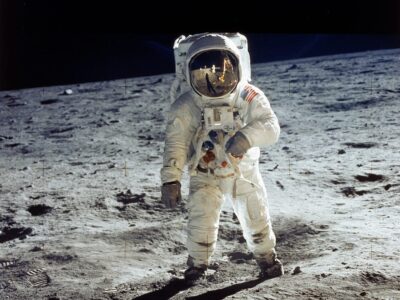I grew up in the Apollo era. That was the era in which Neil Armstrong walked on the moon. Neil traveled there on the top of an explosives laden cylinder called the Saturn V rocket. According to wikipedia, the main engine churned out the equivalent power of 85 Hoover dams, albeit for just as long as it took to get into orbit. I was completely engrossed in the whole thing, and collected newspaper articles from launch to splash down. I also remember watching the first steps onto the moon through a teensy weensy black and white TV screen. Dunno if this single event was what propelled me into an engineering career or if it was the other way around. I also don’t remember any of my friends being as fascinated with the whole thing as I was.
My bedroom was adorned with various models, from the Apollo era as well as the Mercury era. There was the mighty Saturn V model which stood a full 4 feet tall, a lunar lander, and a Mercury Redstone rocket. All were painted meticulously in Testor’s model paint, using the official colors from the NASA missions. One day the models disappeared, and I cannot for the life of me figure out where they went or who chucked them onto the ash heap of history. Mom was suspect number one, as she couldn’t stand to have anything sitting around for too long.
What can I say about Estes Rockets? They were some of the most coveted items owned by a kid, for they held the lure of mysterious exploration of unknown realms as well as the possibility of permanent disfigurement from an industrial accident.
An Estes Rocket was a model made of balsa wood and cardboard into which you would insert a solid propellant engine. The engine was lit with a short piece of fuse and voila, you had a launch platform upon which you could do all sorts of wondrous things. Those wondrous things included launching bugs and frogs into orbit as well as near death experiences when we fired the rocket horizontally at a brick wall. You can show a kid how to do something safely, but you can’t make him do it.
Depending on rocket size and engine size, the rockets could go anywhere between 100 feet in the air and “Holy Crap, where did it go?”. The rockets that I remember most were the Sprint and the Big Bertha. The Sprint was a tiny little squirt that would fly really high and sort of spin back down to earth without the assistance of a parachute. Put a big enough engine in a Sprint, and I think you could actually attain low earth orbit. The Big Bertha looked like a V2 Missile and only went about 200 feet in the air. It was fun to watch, because the take off was really slow and the parachute landing was graceful and majestic. Of course there was also the case where the parachute did not deploy, resulting in everyone ducking for cover, so as not to get their dome pierced by the javelin descending from the heavens. Later on we would experiment with multi stage rockets, designing and building our own rockets from spare parts, and using electronic ignition instead of fuses.
You don’t see kids firing these things off anymore, at least I have not seen it. Theories abound, but I would like to propose a few. First and foremost would be the overbearing parent that fears a crippling injury to their beloved cherub of a child. I do not remember anybody carting me around to sports or even worrying about where I was at any particular instant in time.
My second theory is that we have handed out so many distractions to our kids that they don’t have time to come up with their own distractions. Come on man!! There is no 10 year old that needs a cell phone, an XBox, a TV in their room, and a full schedule of activities and play times with other kids to fill in their mundane existence. I fully believe that if you leave a kid to their own devices they will arrive at the most creative of solutions to the problem of boredom. We don’t need more STEM in schools, we need less interventionism.

